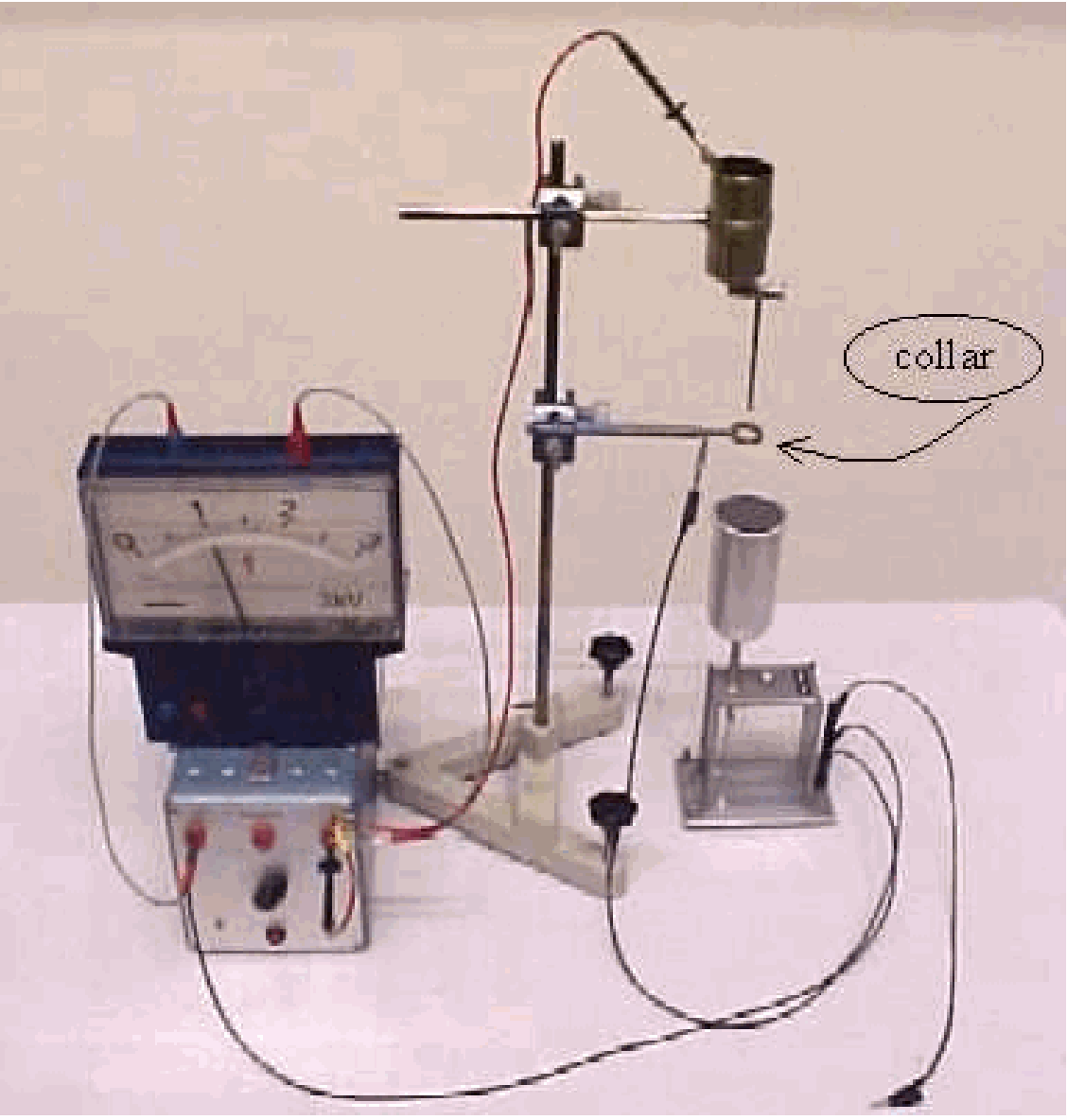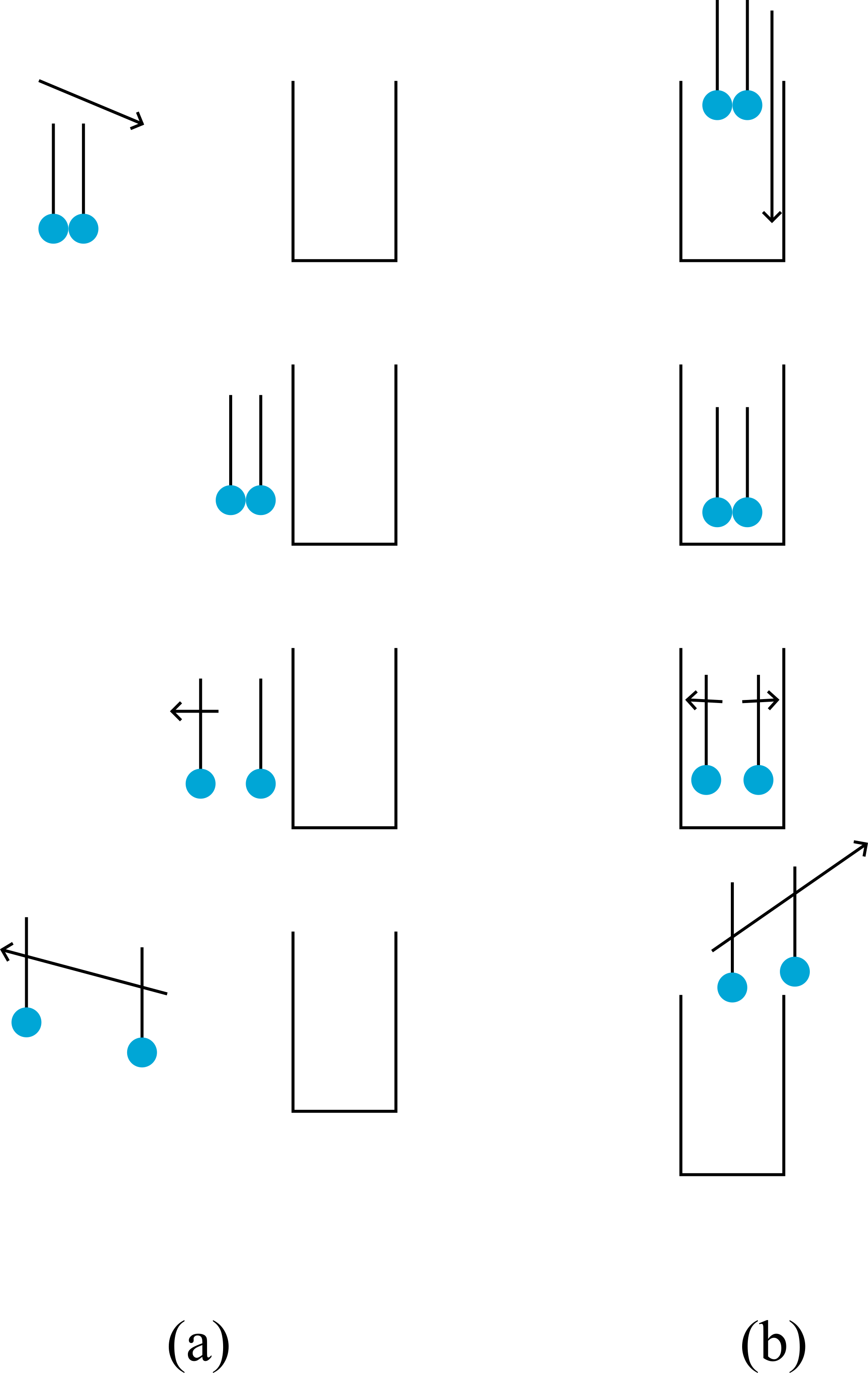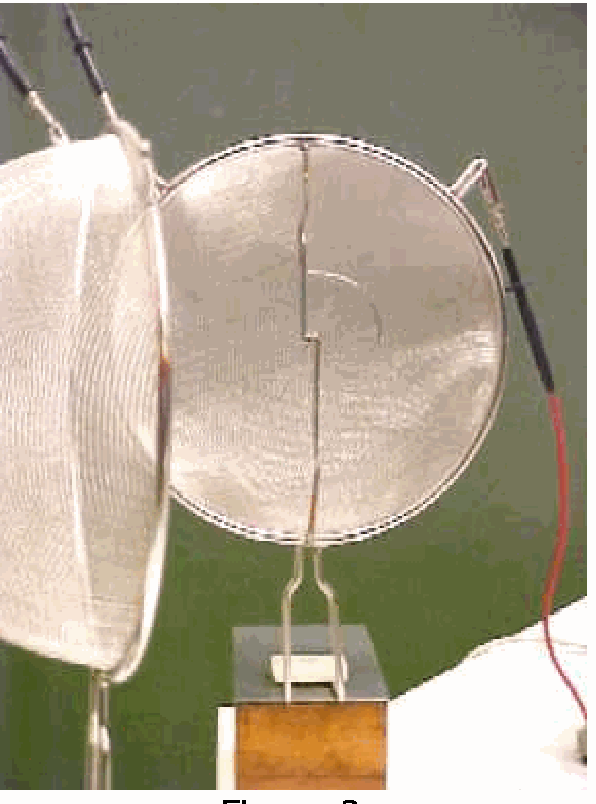02 Charge is on the Outside#
Aim#
To show that charge is on the outside of a conductor as an application of Gauss’s law.
Subjects#
5B10 (Electric Fields) 5B20 (Gauss’ Law)
Diagram#

Fig. 457 .#
Equipment#
Two large metal sieves, one mounted with an electroscope. They are mounted on heavy wooden blocks.
Two large blocks of styrofoam.
Van de Graaff generator.
Camera.
Presentation#
The two metal hemispheres (sieves) are placed on the styrofoam blocks and placed in such a way that they make a complete metal sphere. The two metal hemispheres are electrically connected and together they are connected to a Van de Graaff generator. The camera is sharply focussed on the electroscope so that it is clearly visible through the metal sieve.
The students are asked to predict what will happen to the electroscope when the metal sphere is charged.
The Van de Graaff generator is switched on and charges the closed metal sphere. The electroscope inside shows no deflection (see Figure 458).

Fig. 458 .#
Now students are asked to predict what will happen to the electroscope when the charged metal sphere is separated into two halves.
The sphere is opened by pulling one sieve away (pulling the styrofoam block) and immediately the electroscope shows a deflection (see Figure 459). Closing the metal sphere again makes the deflection of the electroscope zero again.

Fig. 459 .#
.
Explanation#
The electric field inside any conductor is zero even if it carries a net charge (otherwise the free charges inside the conductor would move until the net force on each were zero, and hence \(E\) were zero).
The net charge must reside on the outer surface. Gauss’s law shows this: When we choose a Gaussian surface close to the surface of the conductor but still inside it, the electric field inside is zero at all points. Hence there can be no net charge on the inside. The electroscope on the inside of the hemisphere, being a charge detector, shows this.
When the two halves are separated, the electroscope becomes an outer surface and so it will carry charge. The electroscope, being this outer surface, shows this by its deflection.
Remarks#
Manipulate the two sieves only by touching the styrofoam blocks. The heavy wooden blocks are no good isolators.
Sources#
Giancoli, D.G., Physics for scientists and engineers with modern physics, pag. 584-585
